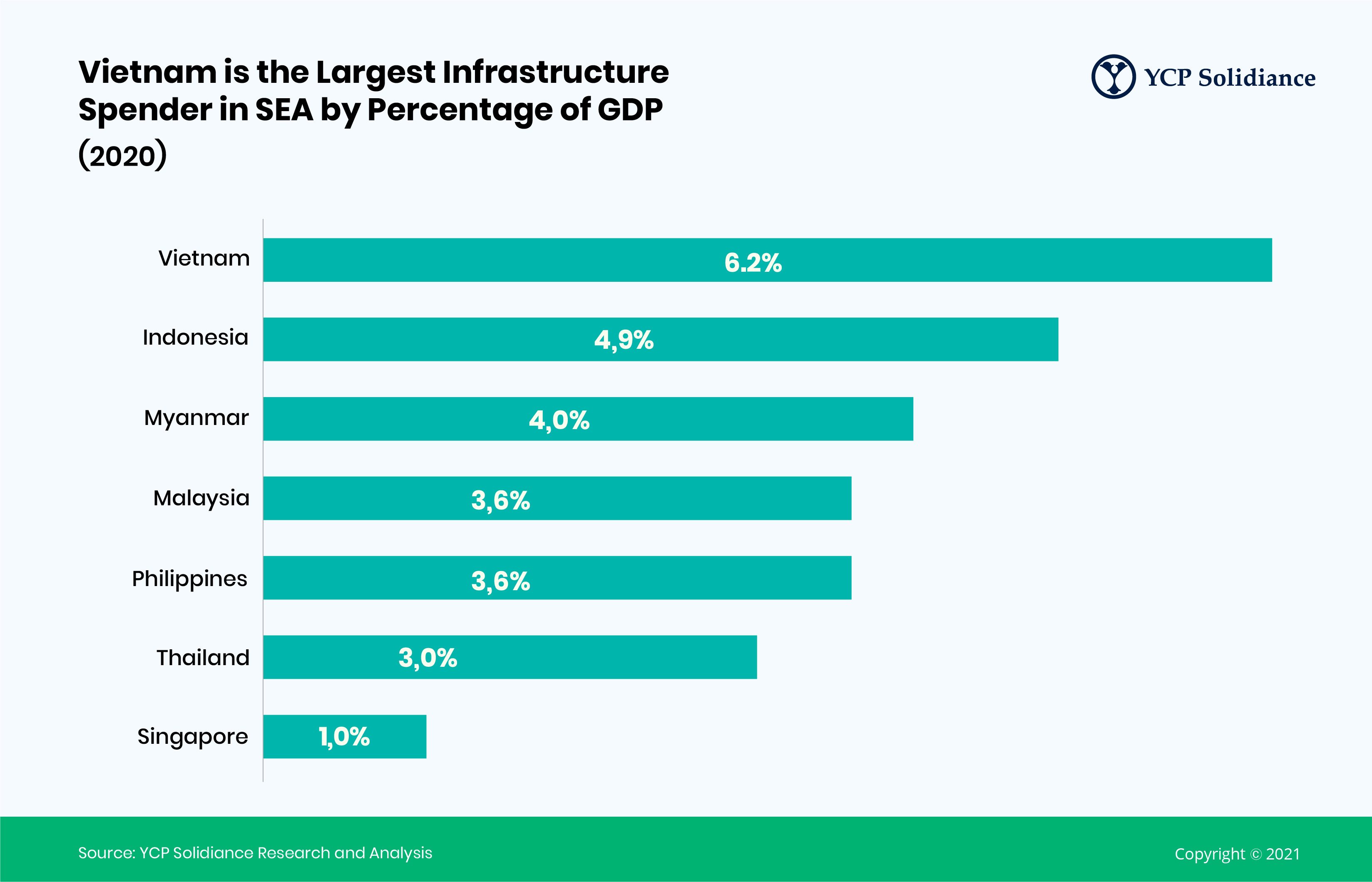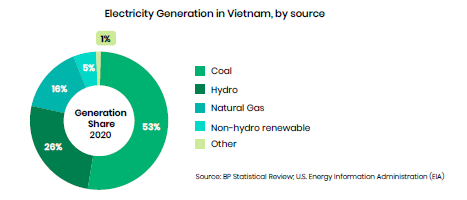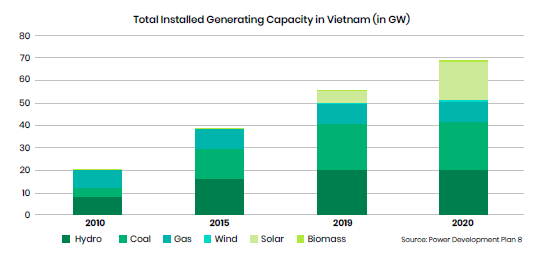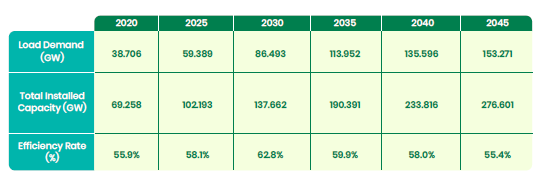In Vietnam, the pandemic has accelerated several changes, most notably in terms of sustainability. Given that businesses situated in Vietnam are diverse and stem from several industries like manufacturing, retail, e-commerce, etc., further developing the cities wherein these operations take place has been a key trend. Driven by digitalization and increasing awareness on the importance of sustainable business, cities in Vietnam are keen on making significant changes that not only improve business, but also the overall quality of life. One such area is infrastructure wherein energy diversification, electrification, and a desire to shift toward renewable sources of energy has been the norm.
To understand how Vietnam and the businesses situated in major cities throughout the country aim to improve infrastructure in a sustainable manner, read this excerpt from our latest white paper, Public and Private Cooperation: Sustainable Urban Development in Vietnam, which you can read in full here.
As the center of economic, commercial, and political activity, the major cities of Vietnam play an important role in maintaining social stability and the increasingly high standard of living that the Vietnamese are becoming more accustomed to. Infrastructure, transportation, living and working spaces, and the environmental impact of public spaces are interconnected in numerous ways.
The onset of the COVID-19 pandemic in early 2020 allowed Vietnam to demonstrate its competent, swift, and effective public health response early on, especially compared to the disorganized and confusing responses from many other governments globally. As more variants emerged from areas heavily mismanaged over the course of the pandemic, Vietnam was inevitably affected seriously, but is now beginning to emerge with even stronger public health systems and infrastructure in place.
Beyond the most pressing issue of the pandemic that has focused a lot of attention on public health in the last year, Vietnam continues to focus on infrastructure and economic development with a much higher consideration for sustainability and environmental impact. Increasing attention on the environmental impact and overall sustainability of cities is long overdue and as one of the countries most vulnerable to climate change, both the public and private sectors have made significant steps to address sustaining an environment that supports a rapidly growing urban population in an uncertain future.
Infrastructure
Infrastructure plays a vital role in the sustainable development of cities and the adoption of smart technology. Two major infrastructure areas that will be a key focus for the country will be Logistics & Transportation, and Energy.
Logistical and transportation infrastructure play a major role in the movement of goods and services to connect the major cities as well as the rural areas of the country. Vietnam is a challenging environment for transportation by virtue of its dramatic geographic features, as well its very unusual size and shape. With a very long coastline, the majority of transport services occur from north to south between the main urban centers of Ho Chi Minh City and Hanoi.
Energy infrastructure drives the current industry and the growing manufacturing capabilities of Vietnam, and will be a main driver of future growth of the economic engine. More sustainable and less environmentally impactful options are being favored and prioritized in all plans by both central and provincial governments. In the short-term, the focus is on stabilizing the electricity grid and increasing its efficiency, while the long-term focus is diversifying the energy mix of the country and increasing its energy security and independence.
Energy Diversification
Renewable energy policies were only introduced in Vietnam in recent years, but solar and wind energy have grown dramatically since 2019, due to the introduction of feed-in tariffs (FiT) and a number of other incentive programs to attract foreign technology and development in the space. Diversification of the energy mix is the primary goal of the central government in order to increase energy security for the country.
While the global economy suffered during at the height of the COVID-19 pandemic, the energy industry continued to grow steadily with nearly 10GW of solar capacity added to the Vietnamese grid in 2020 alone, and more than 5GW of wind under construction as of October 2021.
Based on PDP8, solar and wind will make up a significant portion of electricity generation in the future, but new technologies that have potential to impact the energy mix, like hydrogen and energy storage, have yet to be accounted for. Energy storage technology is already beginning to be introduced at pilot scale and is being heavily supported by foreign technology and MoIT.
Energy Infrastructure: Present and Outlook
The success of attractive renewable energy policy and interest from the private sector reached a climax when the country had to begin curtailing grid connections. The rapid growth of generation over the last few years highlighted the aging and inadequate electricity grid and transmission infrastructure, as well as a need to improve and develop it to handle both growing demand and increases in supply.
As a result, Vietnam Electricity (EVN) turned its attention to improving and updating its electricity grid and shifting the finance of generation to the private sector. This was boosted further by the passage of the Public-Private Partnership Law in June 2020, which took effect in January 2021 and provided a more complete and transparent framework for investments to occur. Since then, industry leaders have advocated for expansion of policy for energy efficiency, the growth of renewable energy sources, and incentives for development of storage.
Energy Infrastructure: Electricity Sector Liberalization
Solar tendering and pilot Direct Power Purchase Agreements (DPPA) were originally scheduled to take place in late 2020, but the onset of the COVID-19 pandemic slowed down policy progress. It was further delayed due to outbreaks of the Delta Variant in mid-2021, and is now expected to begin progress in early 2022. The government is expected to push tenders and DPPAs for the next few years, as the market and the levelized cost of electricity (LCOE) eventually stabilizes when the market is expected to carry on independent of policy intervention.
With the expected growth of industry and manufacturing in Vietnam, another area of focus for energy infrastructure beyond renewable and energy storage options is increasing energy efficiency and intensity. With one of the lowest energy efficiency rates in the world, the private sector will have unique opportunities to develop more energy efficient manufacturing and production, especially as the infamously low electricity rates in Vietnam will slowly move towards unsubsidized market pricing.
To get further insight into other sustainable development trends happening in Vietnam and in Southeast Asia, subscribe to our newsletter here and check out these reports:




